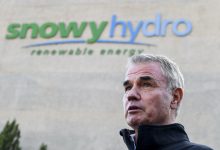Following publication of RenewEconomy’s coverage of the Snowy 2.0 EPC contract, signed with a joint Italian-Australia venture for $5.1 billion, ITK has had a chance to discuss our comments with Snowy Hydro management.
The most important point to note is that although the EPC contract does run for eight years, as Clough Engineering revealed, Snowy Hydro says it expects all of the capital expenditure will be spent prior to 2025 and the project is expected to be fully on line and commissioned by, say, December, 2025. In our view this is good news for everyone except perhaps potential competitors.
The eight years mentioned in the Clough press release allows for an extended period beyond completion for performance guarantees, defects management, etc. Of course this could have been cleared up in five minutes if Snowy Hydro had answered the questions we asked earlier this week.
Secondly, management believe that the 5.7 per cent interest rate for debt referenced in their own business case is by far a worst-case outcome and that actual interest rate will be significantly lower. Had I not seen that number in the business case published by Snowy itself I would have estimated say 200-250 bps over the 10 year bond rate, which is more like 4 per cent than any other number.
Thirdly, management state that the $5.1 billion nominal value of the contract is still within the “real” December 2017 $4.5 billion number used in the business case. Snowy management says it is more confident in that number, and that the project has to some extent been derisked.
Personally, I have never liked the use of real numbers, because in fact they are not real. They are imaginary numbers in spreadsheets.
The real numbers are the ones you pay to the EPC contractor in the dollars of the day, but I certainly have no problem that the $5.1 billion nominal is no worse than $4.5 billion real. It’s for that reason I carefully calculated a book value rather than cost, albeit over five years.
I did not discuss, in the ITK note, the revenue model for Snowy 2.0, but it’s fair to say that notwithstanding that management worked up the business case over two years, it’s not obvious to an outsider to see how the project will earn a return.
Certainly it will require “cap” prices and arbitrage opportunities in the future to be different from those of today. I can see how they might be different, but I’m sure management would agree that predictions of prices some years in the future is fraught with risk and uncertainty.
ITK looks forward to following the progress of Snowy 2.0 with interest.










